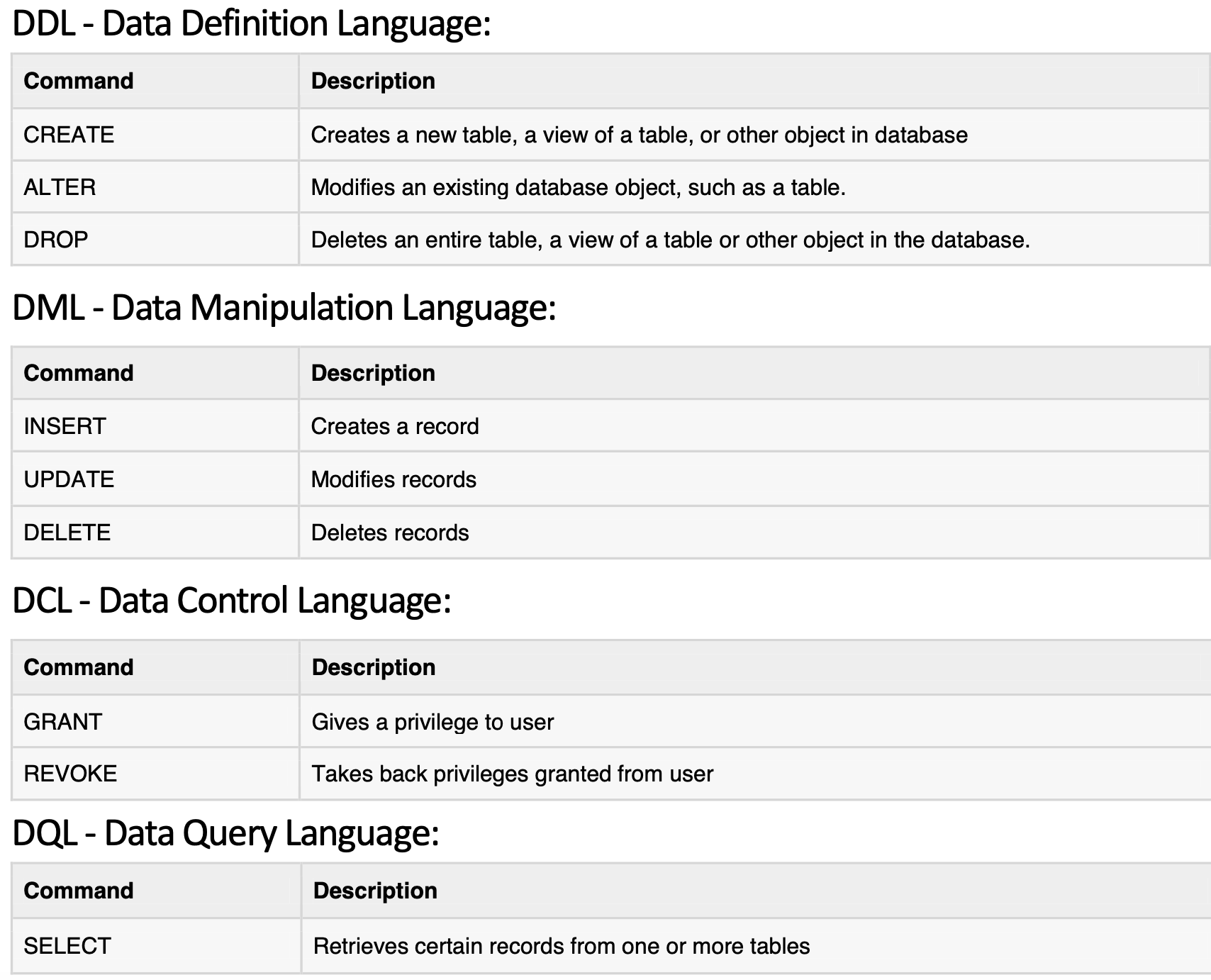Introduction
What is a Relational Database?
A relational database is a collection of data stored in tables. Each table consists of one or more vertical columns and zero or more horizontal rows.
Tables are identified by name
Table names must be unique within a database. Typical SQL databases allow up to 18 characters in a table name. The first character must be a letter, while the remaining characters can be letters, numbers, or underscores.
Columns are identified by name
Column names are unique within each table, but the same column name can appear in different tables. Both tables above, for example, have COUNTRY columns.
Rows are identified by their contents
The rows of a table do not have names, nor is their position in a table fixed. Therefore, we refer to the rows of tables by describing the data values they contain: ‘Person number 2,’ for instance, or ‘Al English-speaking countries.’
SQL
SQL, or Structured Query Language, is a specialized programming language used for managing and manipulating relational databases. SQL provides a standardized way to interact with databases, allowing users and applications to perform a wide range of operations on data
SQL Commands
The standard SQL commands to interact with relational databases are CREATE, SELECT, INSERT, UPDATE, DELETE and DROP. These commands can be classified based on their nature:
